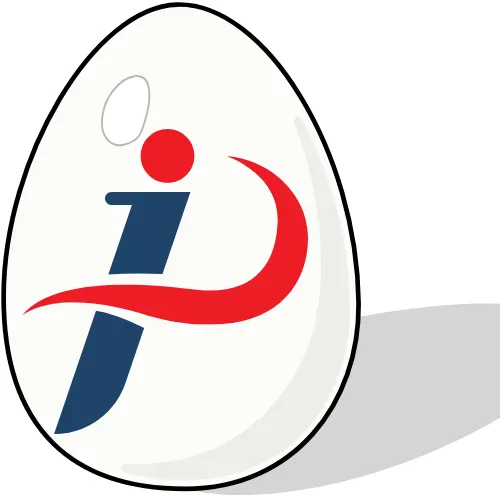After months of pressure, missed deadlines, and rising public concern, the federal government has quietly eased its plan to end all Social Security paper checks. Just days after the final cutoff date of September 30, 2025, the Social Security Administration (SSA) confirmed that it will not cut off payments for seniors and disabled individuals unable to transition to electronic deposits.
This reversal follows a nationwide debate over access, fairness, and the impact of digital-only policies on vulnerable Americans.
“The goal was modernization, not exclusion,” explained Matthew Bilenki, the SSA’s Finance and Management Director. “We want to move forward with efficiency while ensuring no one loses their benefits.”
The Push for Digital Payments
The push toward digital payments began under a March 2025 executive order by President Trump, aimed at cutting costs, reducing fraud, and speeding up Social Security payments.
Why the Government Wanted the Change?
- Security: Paper checks are 16 times more likely to be stolen than electronic payments.
- Cost Efficiency: Each check costs around 50 cents to print and mail versus 15 cents for electronic transfers.
- Speed: Direct deposit and the Direct Express Debit Card allow recipients to access funds instantly.
By September 2025, 99.4% of the 69.5 million Social Security recipients were already receiving payments electronically. However, about 400,000 individuals — primarily seniors in rural areas and those without bank access — still relied on traditional paper checks.
The Problem with Eliminating Paper Checks
While digital payments make sense for efficiency, the all-digital mandate exposed significant gaps in accessibility.
Who Was Most Affected?
- Rural residents with unreliable internet or limited banking infrastructure.
- Elderly recipients uncomfortable or unfamiliar with online systems.
- Disabled or mentally challenged individuals reliant on routine check-cashing services.
- Low-income seniors unable to meet bank account requirements.
“They may not even have the mental capacity or tools to switch,” said Nancy Altman, President of Social Security Works. “Forcing them into digital-only options risks cutting off their lifeline.”
States With the Highest Paper-Check Dependence
| State | Recipients Still Using Checks (2025) |
|---|---|
| California | 43,000 |
| Texas | 28,000 |
| Florida | 24,000 |
These states host many retirees and seniors in remote communities, making the digital transition particularly challenging.
Government Softens Its Stance
Despite its earlier firm deadlines, the SSA announced that benefits will not be interrupted for those unable to switch. The agency’s September 19, 2025 blog post clarified:
“If you have no other way to receive payments, we will continue to issue paper checks.”
The SSA’s internal communications later confirmed that the directive to cut off remaining paper check users was quietly suspended. Officials now emphasize support and flexibility over enforcement.
Why the Policy Shift Happened?
Public pressure from advocacy groups, senior organizations, and lawmakers played a major role. Reports from community banks and local agencies showed that many seniors had struggled to complete online transitions.
The government’s response signals a more compassionate approach — prioritizing inclusion over strict cost-cutting.
“Technology should work for people, not against them,” said Senator Maria Lopez, a member of the Senate Aging Committee. “No senior should lose access to their benefits because they don’t have internet access.”
How to Transition to Electronic Payments?
For recipients still on paper checks, the SSA continues to encourage digital transition — but now with assistance rather than penalties.
1. Direct Deposit
- Available for anyone with a bank or credit union account.
- Set up online at ssa.gov/myaccount or by calling your local SSA office.
2. Direct Express® Debit Card
- A government-backed debit card for those without bank accounts.
- No credit check required; funds are loaded automatically each month.
- Sign up at usdirectexpress.com or call 1-800-333-1795.
3. Waiver Option for Paper Checks
- For individuals who cannot use electronic payments due to disability, location, or other verified hardship.
- Call the U.S. Treasury Department at 1-877-874-6347 to request an exemption.
Each paper check now includes printed instructions and a helpline number for transition assistance.
Balancing Modernization and Accessibility
The SSA still aims to reach 100% digital payments, but officials now emphasize compassion and gradual transition. The focus has shifted from compliance deadlines to support programs for seniors who need help.
| Objective | Old Policy (Pre-September 2025) | New Approach (Post-September 2025) |
|---|---|---|
| Deadline Enforcement | Strict cutoff date | Flexible grace period |
| Recipients Without Access | Risked losing benefits | Continue to receive paper checks |
| Transition Support | Limited outreach | Dedicated helpline and assistance programs |
| Tone | Mandatory compliance | Supportive and inclusive |
Why This Matters: Protecting the Vulnerable?
Social Security is the main source of income for millions of seniors and disabled Americans. Even a short payment delay could mean missed rent, late bills, or lost medical care.
By maintaining paper checks for those who need them most, the government is striking a balance — embracing digital innovation while ensuring no one is left behind.
“This change shows empathy,” said Eleanor Gibbs, a retired postal worker from Texas. “Not everyone has the tools or trust to go digital, and that’s okay.”
What Comes Next?
Officials from the Treasury Department and SSA plan to launch localized outreach programs in early 2026. These include:
- Mobile sign-up units visiting rural areas.
- Training workshops for seniors at community centers.
- Partnerships with local banks to simplify the account-opening process.
The long-term goal remains full modernization, but the government now recognizes that accessibility must come first.
“Modernization is not one-size-fits-all,” said SSA Director Matthew Bilenki. “We’re modernizing with humanity.”
Conclusion: Compassion Over Compliance
The government’s revised stance represents a victory for senior advocates and a lesson in policymaking balance. While efficiency remains the goal, compassion now defines the process. Those who rely on paper checks — whether due to disability, geography, or comfort — can rest assured that their Social Security payments will continue without interruption.
As the U.S. transitions into a fully digital era, this decision stands as a reminder: progress must never come at the expense of the people it serves.
FAQs
Are Social Security paper checks ending completely?
No. While the SSA planned to stop them by September 30, 2025, the agency will continue paper checks for those who cannot switch to electronic payments.
How can I set up direct deposit?
Log in to your my Social Security account at ssa.gov/myaccount or contact your local Social Security office for help.
What if I don’t have a bank account?
You can use the Direct Express Debit Card, which doesn’t require a bank account. Call 1-800-333-1795 to sign up.
Can I still receive paper checks if I can’t switch?
Yes. Call the U.S. Treasury at 1-877-874-6347 to request a waiver for continued paper payments.
Why did the SSA try to end paper checks?
To reduce fraud, lower costs, and streamline payments. However, officials now acknowledge that accessibility challenges require flexibility.

